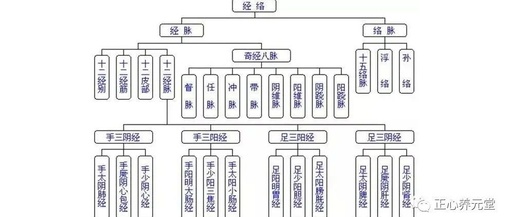Meridians are the general term for the jingmai (经脉) and luomai (络脉). In the human body, there are certain pathways that run throughout the body, referred to as jingmai by ancient scholars; along these main pathways, there are branches, which are further divided into smaller branches, known as luomai. The term “mai” (脉) is a comprehensive concept for this structure. The mystery has persisted for centuries. As early as two thousand years ago during the Han Dynasty, there were maps of the meridians. The Neijing (内经) contains extensive discussions on meridians. In the eyes of many, meridians have long been validated by countless practices over the centuries, seemingly an objective fact without question. However, modern anatomy, no matter how advanced the microscope, cannot find meridians that align with classical maps. So, do meridians exist? If so, how were they discovered? What is the relationship between meridians and modern science? If not, how do we explain the fourteen meridian maps and related discussions in ancient literature? How do we account for the efficacy of acupuncture? These are questions that remain without a unified understanding today.
In the scientific community, especially in the fields of biology and medicine, the view that denies the existence of meridians seems to be mainstream. One perspective holds that meridians are a product of the combination of ancient Chinese philosophy and medicine, a construct virtualized on the human body using philosophical viewpoints, and objectively do not exist, which scientific experiments can never confirm. Besides considering meridians as a philosophical product, there are two differing views on the existence of meridians in the scientific community. (1) The blood vessel and nerve theory posits that meridians are equivalent to the vascular and nervous systems, representing different terminologies used by ancient Chinese medicine and modern medicine for the same phenomena. Ancient Chinese anatomy was not well developed, and traditional medical literature did not contain the modern meanings of vascular and nervous systems. Some researchers of traditional medical literature believe that many descriptions of meridians actually refer to the blood circulation system and its functions. It is now widely accepted in academia that the ancient meridian system includes the modern vascular system. The Neijing records do not mention nerves, only meridians. The nervous system is essential for human life activities; any medical theory that ignores the existence and function of nerves could not have gained practical support and persisted to this day. Modern medical research indicates that the ancient concept of meridians is quite broad, and many descriptions of meridians are essentially the same as modern nerve functions. Anatomy confirms that acupuncture points on the meridians are often areas dense with nerves. Studies on acupuncture anesthesia and electroacupuncture efficacy suggest that many meridian phenomena can be explained by nerve functions. Thus, some believe that meridians are the vascular and nervous systems.
(2) The unknown system theory posits that the broad concept of the meridian system includes the vascular and nervous systems, and may also encompass fluid regulation, lymphatic systems, and other systems confirmed by modern medicine. However, they also believe that beyond the systems already discovered and confirmed by science, there exists a system unique to meridians that modern science has yet to understand. The narrow definition of meridians typically refers to this unique system, which differs from the vascular and nervous systems, characterized by the following features: 1. Unique pathways. The Neijing specifies 14 meridian lines and the acupuncture points along these lines. The unknown system theory asserts that these 14 meridian lines are distinct from the vascular and nervous systems, objectively existing yet unrecognized, and are the core of meridians. 2. Unique relationships with organs. Each meridian is associated with corresponding organs and is related to the physiological and pathological conditions of those organs, hence named according to the respective organs, such as xinxing (心经, Heart Meridian), feijing (肺经, Lung Meridian), danjing (胆经, Gallbladder Meridian), changjing (肠经, Intestine Meridian), weijing (胃经, Stomach Meridian), etc. The relationship between meridian lines and organs is something modern science has yet to comprehend. 3. Unique theories and therapeutic effects. Meridian theory posits that meridians are pathways for the flow of qi (气). What is qi? This remains an unknown question. According to theories of yin-yang balance and the concepts of deficiency and excess, which differ from Western medicine, acupuncture may achieve unique effects that are difficult to explain by modern medical standards.

